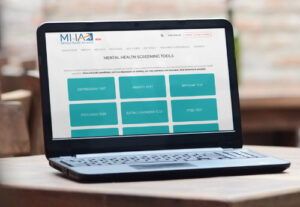While BIPOC caregivers tend to receive more support from family and friends than white caregivers do, they face a lot of challenges that white caregivers don’t experience.
Family caregivers exist across all demographics – people providing care to their loved ones come from every age, gender, socioeconomic status, and race/ethnicity. However, not all identities are represented among caregivers at rates proportional to the general population and they don’t all share the same experiences. For a long time, caregiving research and media portrayals centered around white caregivers – mostly white, middle-aged, middle-class women. Currently, nearly 40% of caregivers identify as Black, Indigenous, or People of Color (BIPOC). Within each BIPOC racial/ethnic group, the rates of caregiving are higher than in white demographics.
While BIPOC caregivers tend to receive more support from family and friends than white caregivers do, they face a lot of challenges that white caregivers don’t experience. On average, BIPOC caregivers have lower socioeconomic status. Studies have found that Black and Hispanic caregivers often feel ignored in medical settings and left out of crucial care discussions by staff. Asian-American caregivers don’t utilize professional support services as often as others, likely because of limited culturally relevant services.
While most caregivers feel as though caregiving is the “right” thing to do, BIPOC individuals often see it as an expected part of life that each generation participates in at some point. For many, there’s no decision to be made about whether to be a caregiver – it is just a role they assume without much conscious thought. In some cultures, the role of caregiving is based on gender and birth order. While white individuals tend to take on the caregiving role due to feelings of personal responsibility, caregiving is a cultural expectation in many BIPOC communities and families.
Race breakdown
Among caregivers in the United States, the race breakdown is as follows:
- 61% identify as white
- 17% identify as Hispanic (non-white, non-Black)
- 14% identify as Black
- 5% identify as Asian-American and Pacific Islander
Caregiver age
On average, BIPOC caregivers are younger than white caregivers. The average age of caregivers by racial/ethnic group are:
- White: 51.7 years old
- Asian-American: 49.3 years old
- African American/Black: 47.7 years old
- Hispanic: 43.3 years old
Sixty-two percent of white caregivers are over the age of 50, while it’s more common for BIPOC to be caregivers in early adulthood. The largest age demographic among each racial/ethnic group are:
- Hispanic: 18-34 and 50+ (34% of Hispanic caregivers are 18-34 and 34% of Hispanic caregivers are 50+)
- African American/Black: 50+ (46%)
- Asian-American: 50+ (48%)
- White: 50+ (62%)
In both the 18-34 and 35-49 age brackets, there is a higher percentage of Hispanic, Black, and Asian-American caregivers (individually) than white caregivers.
Time spent caregiving
Black and Hispanic caregivers spend the most time providing care:
- African American/Black:: 31.2 hours per week
- Hispanic: 26 hours per week
- Asian-American: 24,1 hours per week
- White: 21.2 hours per week
Employment
Across ethnicities, nearly 4 in 10 caregivers are not employed:
- Asian-American: 41% not employed
- Hispanic: 40% not employed
- White: 38% not employed
- African American/Black: 36% not employed
Caregiving can disrupt an individual’s employment, and many caregivers across ethnicities have needed to adjust their workload or schedule to accommodate their other duties. In some cases, this leads to retiring early or quitting:
- Black: 19% retire early/quit
- White: 15% retire early/quit
- Hispanic: 13% retire early/quit
- Asian-American: 6% retire early/quit
Many employed caregivers have told their supervisor about their caregiving role, but a number of people across ethnicities have not told anyone at work:
- Black: 36%
- Hispanic: 31%
- Asian-American: 23%
- White: 20%
Financial impact
While far greater percentages of caregivers in all groups describe their financial well-being as good or excellent versus poor, the self-described financial well-being of caregivers varies substantially among racial/ethnic groups:
- Asian-American: 61% excellent/good, 15% poor
- White: 59% excellent/good, 14% poor
- Hispanic: 46% excellent/good, 17% poor
- Black: 41% excellent/good, 19% poor
While most caregivers across all ethnicities report that their financial situation did not change upon becoming a caregiver, around 1 in 5 say it worsened. Of those who reported a worsening financial situation, the racial/ethnic breakdown is:
- Asian-American: 22%
- White: 19%
- Black: 19%
- Hispanic: 16%
General health
People caring for a close relative are at a greater risk of declining health as a result of caregiving than those caring for distant relatives or unrelated individuals. Among racial/ethnic groups, white and Asian-American caregivers are more likely to say caregiving has negatively impacted their health:
- White: 26%
- Asian-American: 24%
- Hispanic: 15%
- Black: 14%
Mental health impact
The emotional burden of caregiving is significant across racial/ethnic groups, though white and Hispanic caregivers report higher rates of distress:
- White: 56% report feelings of isolation or loneliness; 32% report feelings of anxiety
- Hispanic: 52% report feelings of isolation or loneliness; 34% report feelings of anxiety
- Black: 43% report feelings of isolation or loneliness; 23% report feelings of anxiety
- Asian-American: not reported
Mental health resources for caregivers
 Caregiving can often have a significant impact on the life of the caregiver in more ways than one. It can make maintaining your physical and mental health more difficult and may put a strain on work and social life. It’s important for caregivers to take care of their own mental health. Supporting caregivers with information and resources can help them maintain their mental health and better serve loved ones with mental illness.
Caregiving can often have a significant impact on the life of the caregiver in more ways than one. It can make maintaining your physical and mental health more difficult and may put a strain on work and social life. It’s important for caregivers to take care of their own mental health. Supporting caregivers with information and resources can help them maintain their mental health and better serve loved ones with mental illness.
Take a mental health test
 Many people find caregiving to be rewarding, but it isn’t without challenges. If you’re providing care for a loved one and feel like your mental health is worsening, you aren’t alone. Take a screen to determine if what you’re experiencing may be a sign of a mental health condition.
Many people find caregiving to be rewarding, but it isn’t without challenges. If you’re providing care for a loved one and feel like your mental health is worsening, you aren’t alone. Take a screen to determine if what you’re experiencing may be a sign of a mental health condition.

